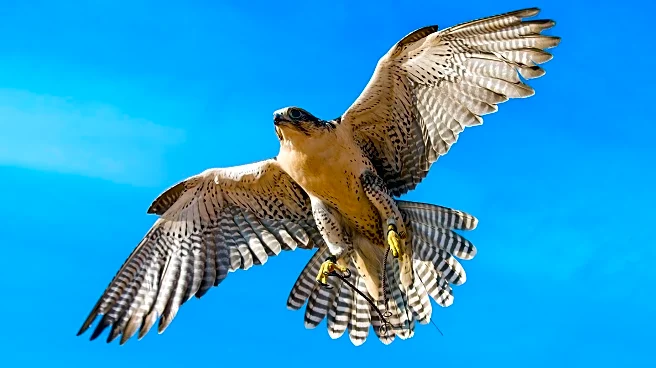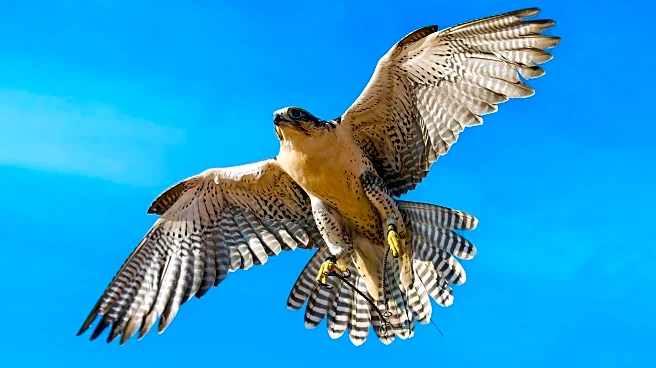What's Happening?
The Lake Erie Nature & Science Center is set to host a wildlife rehabilitation and release event on October 18 and 19, coinciding with the fall migration season. This period marks the journey of millions of monarch butterflies, songbirds, and tree bats traveling south. Monarch butterflies embark on a 3,000-mile journey to Mexico, while ruby-throated hummingbirds make a 500-mile nonstop flight across the Gulf of Mexico. Songbirds navigate by stars and magnetic fields, covering hundreds of miles in darkness. The event aims to showcase the rehabilitation efforts for injured birds, which often collide with city buildings during their migration.
Why It's Important?
Fall migration is a critical time for various species, highlighting the challenges they face due to urbanization. Building collisions result in significant bird fatalities, with an estimated half-billion birds affected annually. The event at Lake Erie Nature & Science Center underscores the importance of wildlife conservation and rehabilitation. It provides an opportunity for the public to engage with conservation efforts and understand the impact of human activities on migratory patterns. The initiative also supports the broader ecosystem by aiding in the recovery and release of injured wildlife.
What's Next?
The upcoming event will allow attendees to witness wildlife rehabilitation firsthand and learn about the challenges migratory species face. Volunteers from Lights Out Cleveland continue to rescue injured birds and collect data to mitigate building collision risks. The event may inspire further community involvement in conservation efforts and raise awareness about the importance of reducing light pollution to protect migratory birds.
Beyond the Headlines
The fall migration highlights the delicate balance between urban development and wildlife conservation. Ethical considerations arise regarding the impact of human activities on natural phenomena. Long-term shifts in migratory patterns could occur if urbanization continues to disrupt traditional routes. The event serves as a reminder of the need for sustainable practices that accommodate both human and wildlife needs.












